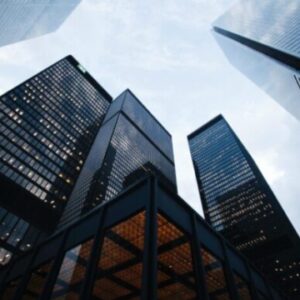The Dirt on Climate Change: Regeneration Starts at Home

In3’s project funding program in now in full swing, working in collaboration with talented In3 Affiliate offices, kicking off “climate smart,” net zero, net carbon negative (net climate positive) and social impact projects worldwide, some with the potential to reverse climate change. This is part of a new “Regenerative Economy” that gives rise to new leaders, rebuilds relationships, spans differences, leverages synergies, while also addressing climate change.
It takes a certain level of moral development to care about this topic and act accordingly. The following is for those with that much backbone, making the world a more livable and hospitable place.
The “dirt” on climate change™ (title of a film by Lois Robin) is that viable, profitable solutions are already at hand, being deployed at a scale that is multiplying faster than the problem they aim to address, and although much more work is needed, at an accelerated pace, fossil sources are generally on the decline, with “impact innovation” now in evidence across all sectors.
This includes profitable solutions that eliminate waste, build truly sustainable food systems (translation: healthy soil, greater water efficiency, healthier foods, without the so-called “yield gap” that has plagued Certified Organic, no-till, and/or managed grazing), buildings (versatile bamboo can preserve slower-growing wood from trees), sustainable transportation that radically reduces emissions (electrification helps), or “decarbonizing” power generation and supply chains (check out a recent, in-depth 2021 interview of Supply Chain Sustainability and Zero Waste with In3 founder Daniel Robin | All Supply Chain Next programs). The point is that we have the answers to draw down more carbon — so-called “climate smart” or “carbon negative” becomes “climate positive” — than we emit, such as scalable, nature-based carbon removed and sequestration using better designs, like selecting bamboo as a building material rather than wood.
Similar to the early days of recycling, where buying “recycled content” products was key to creating a strong, new market, making recycling more profitable and thus desirable, here we also have the power to put our values and convictions into our decision-making. A new generation of climate solutions reflect increasingly better quality and design compared to their less sustainable brethren. Who doesn’t prefer a clean-burning, faster accelerating, better handling Tesla over some gas-guzzling clunker? Or try living or working in a “green” building with better ventilation and insulation. Flimsy built structures may cost less to construct, but buildings or homes with thin walls (the wrong way to save scarce resources) take more energy for heating/cooling, and thus cost more to operate. Plus. who wants to hear the neighbors or be heard by them? Modern building design — such as using fast-growing timber bamboo in walls, interiors or as modular structural elements — has mastered the win-win of saving money in the longer-run while using the best of what nature has to offer, delivering positive social and environmental impacts.
Regeneration Starts with Us, Our Generation
Sustainable food systems are part of the important work of regenerating soils, forests (agriculture becomes like a “good forest”) and ourselves. Healthy soils with abundant and diverse flora mirror recent discoveries with our own digestive flora, where the immunity of plants to resist disease is similar to our own resistance to COVID-19 and other unfriendly bugs.
More on this: Climate Stabilization through a Bio-Inspired Approach
In3’s Investment Strategy — read about our plan for achieving many of the UN’s Sustainable Development Goals (SDGs) within the next decade
Concerned about the US political climate more than the natural one? Why can’t we all just get along? The Social Side of Sustainability
Still think investing in Fossil Fuels — conventional oil & gas — still has a future? Think again. In a recent Tweet, Tom Steyer wrote:
Investing in fossil fuel infrastructure today is investing in the stranded, polluting assets of the future. It doesn’t make sense from a climate perspective. And it doesn’t make sense from a financial perspective. https://t.co/qXiswWY0ru
— Tom Steyer (@TomSteyer) May 26, 2021
Systems thinker Paul Hawken recently published Regeneration, weaving together justice, climate, biodiversity, equity, and human dignity into a “seamless tapestry of action, policy, and transformation that can end the climate crisis in one generation.” Regeneration describes how an inclusive movement can engage the majority of humanity to save the world from the threat of global warming. “This means we must address current human needs, not [just] future existential threats, real as they are, with initiatives that include but go well beyond solar, electric vehicles, and tree planting to include such solutions as … food localization, fire ecology, forests as farms, and … electrifying everything.”




